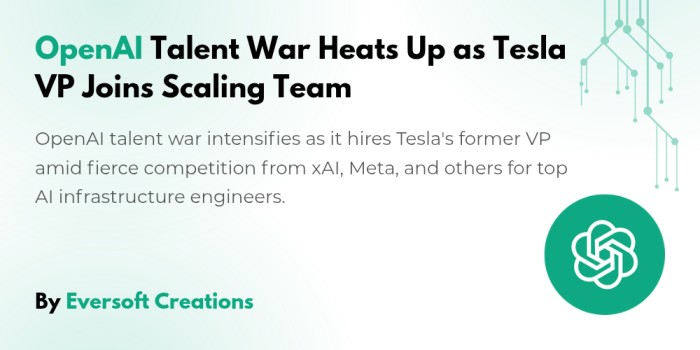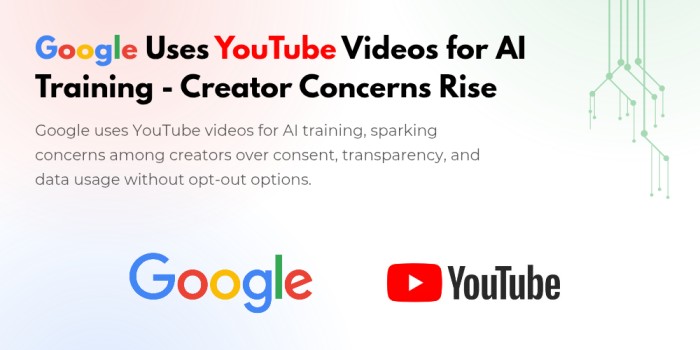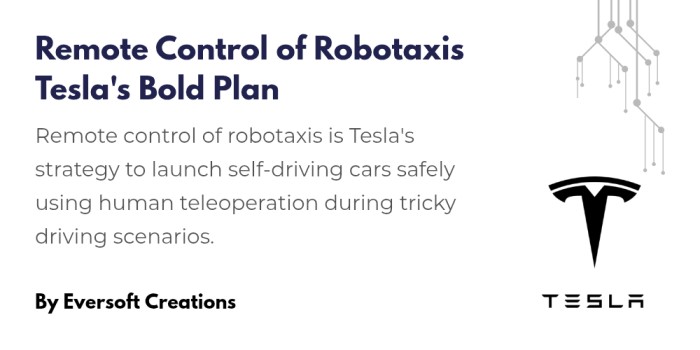Introduction
A scintillating twist in the Artificial intelligence (AI) business has seen the company recruit David Lau who works as the previous Vice President of Software Engineering in Tesla. Lau joins a constellation of four senior engineers that OpenAI hired in the months to support its infrastructural and scaling efforts. This ambitious step will also serve as a testament of the budding competition between the big AI players like OpenAI, Meta, Google, and xAI as all of them are actively competing to gain the most promising talents in the fields of AI and machine learning.
The reason is highlighted by an aggressive increase in size of the scaling team at OpenAI that is involved in developing and maintaining hard infrastructure such as supercomputers and data centers, to remain competitive. This article enters the details of what is currently happening in the OpenAI talent war, the context, implications, and people outlining the dynamics.
Who Are the New Recruits?
Just last week, OpenAI has added four renowned engineers with decades of experience in infrastructure, training AI models, and building large-scale systems:
- David Lau: Vice President of Software Engineering – Tesla. Lau has been instrumental in the software development at Tesla and it is so with neural network training in autonomous driving at Tesla.
- Uday Ruddarraju: Past Head of Infrastructure Engineering at xAI, and a former senior engineer at Robinhood.
- Mike Dalton: An infrastructure expert who worked also at xAI and Robinhood.
- Angela Fan: One of the top AI scientists who worked at Meta (Facebook) and is famous as a researcher of natural language processing and ethics of AI models.
The newly recruited workers are said to be working on Stargate, the ambitious undertaking at OpenAI, which is to develop an immense supercomputing infrastructure to enable the training of the next generations of AI models.
Why Infrastructure Talent Is the New Battleground
The talent war of OpenAI has nothing to do with AI researchers and data scientists alone. And the real competitive advantage is in infrastructure infrastructure teams that could design, construct, and support huge clusters of GPUs, able to train AI models with billions of parameters.
An example is OpenAI, which is ploughing money into Stargate, a next-generation data center project that will pack hundreds of thousands of GPUs. This project resembles that of Elon Musk’s Colossus supercluster at xAI, with more than 100,000 GPUs claimed. Such infrastructure is not only expensive to build, but to run needs elite engineering skills–the very sort of engineers that OpenAI has just stolen.
Inside the OpenAI Talent War
The term OpenAI talent war describes the competitive nature between companies in the field of artificial intelligence to hire and maintain top performing engineers, researchers, and scientists. Skyrocketing wages are now being paid to sports stars into the millions with signing bonuses and stock options shooting to new heights.
Causes of the Talent War
- Explosive growth in AI research and product development.
- Rising demand for GPU-intensive training infrastructure.
- Ambitions to achieve AGI (Artificial General Intelligence) in the next decade.
- Public and enterprise pressure to ship AI-powered tools faster than ever.
Key Players in the Battle
- OpenAI: With Microsoft as an investor, pouring a lot of money into computing with Azure.
- Meta: Opening its Superintelligence Lab, and snatching away OpenAI researchers.
- xAI: The startup AI company of Elon Musk, who has been dipping into Tesla, Twitter/X and OpenAI.
- Google DeepMind: This is still one of the destinations of the very best researchers and infrastructure.
OpenAI Talent War Takes on xAI and Meta
The talent war of OpenAI also has a defensive nature. Meta allegedly raided OpenAI bringing seven artificial intelligence researches to its Superintelligence Lab just weeks ago. Elon Musk has also embarked on an aggressive hiring streak on infrastructure engineers that could support his immense Colossus cluster on xAI.
OpenAI is fighting back, in a sense, by recruiting engineers from both Tesla and xAI and stealing the best of the talent on top of stabilizing its infrastructure aspirations. The addition of David Lau is especially symbolic since he previously worked in Tesla and has extensive experience with AI at scale.
The Importance of the Scaling Team
These engineers are new members of OpenAI scientific research team known as the Scaling: it is the heart of the OpenAI capability to train big language models (LLMs) as well as multimodal systems such as GPT-4o. This team is working on the optimization of GPU, the streamlining of distributed systems, and the overall basis, on which the AI models are created.
Their responsibilities include:
- Designing scalable training pipelines.
- Managing compute resources across Azure and internal data centers.
- Optimizing energy usage and cooling in data clusters.
- Ensuring security, reliability, and latency for inference tasks.
Employing the top rocket scientists in the infrastructure is therefore not an extravagance, but a requisite in OpenAI AGI path.
What This Means for the AI Industry
The OpenAI talent war is not only about who wins the best engineers: the question is who shapes the future of AI. This is with such high stakes that any major hire has an echo in the industry.
Implications include
- The smaller AI startups might not be able to take on each other when it comes to pay and resources.
- There is a potential risk that industry will gain more talent than academic AI research.
- In recent years, investors have been paying more attention not only to the thought-leading management of firms but also to the firms with extensive technical staff.
- To prevent poaching, companies are putting twofold efforts on their internal retention initiatives.
Salaries and Benefits: How High Can They Go?
Existing industry reports put compensation options in a range of $1 to 10 million per year by engineers deployed in the AI infrastructure. These are basic salary, signing bonuses, retention stock units and performance incentives.
With regard to the talent war being put on by the OpenAI community, such packages will no longer be isolated instances, but the increasingly standard packages expected of 1st-tier talent in the arena.
What’s Next for OpenAI?
Having the scaling team in place, OpenAI is in a better position to get projects such as:
- Stargate Supercomputer: A future version of GPT infrastructure which is powered by Azure.
- GPT-5 or GPT-4.5: The mooted further advancements in the LLM arena, which demand unheard of computation.
- Tool use and agent frameworks: Permitting AI to communicate with computer code and act.
With the potential success, OpenAI may easily leave competitors far behind, considering model success and scalability of deployment.
Conclusion: The Talent War Will Define the AI Era
The OpenAI war of talent indicates a greater transformation in terms of power and influence construction in the AI discipline. It is no longer only about algorithms and the training data. It is the matter of who possesses the group able to build and operate the machines that can make those models work.
When companies such as Tesla, Meta, Google, and xAI are all competing to get the same high level of engineers, the real winners will be the ones who will be able to retain and empower the talent and not just secure them.
The new hire of Tesla former VP David Lau and three other vets who worked in AI is an intelligent stroke of genius by OpenAI. It demonstrates the company’s willingness to be one step ahead in the race to artificial general intelligence and warns that the war over the most talented people working in the field is not over yet.
Visit Eversoft Creations for more tech related updates.



